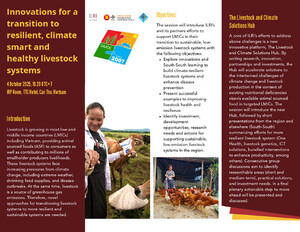
Evaluation of tropical pasture legumes for fodder banks in subhumid Nigeria. 1. Accessions of Centrosema brasilianum, C. pascuorum, Chamaecrista rotundifolia and Stylosanthes hamata
Abstract
The potential of 5 forage legume accessions was assessed under cutting, as alternatives to Stylosanthes hamata cVerano for use in dry season pastures (fodder banks) in Nigeria. Measurements included dry matter yield, nutritive value (crude protein and phosphorus), seed production, drought tolerance and persistence. All accessions had good protein values and could be used to improve the quality of fodder, but their ability to compete with the native vegetation and consistently produce high yields differed. Chamaecrista rotundifolia cWynn performed well and could be used in fodder banks. Accessions of Centrosema brasilianum had poor seed production but warrant further research because of their outstanding ability to remain green and therefore more nutritious in the dry season. Centrosema pascuorum accessions yielded well initially but failed to persist. All accessions showed a decline in the proportion of legume in the third season, supporting the recommendation to crop these areas to reduce grass infestation and exploit the benefits from the legume after 2-3 years.
Citation
Tropical Grasslands;28(2): 65-73










